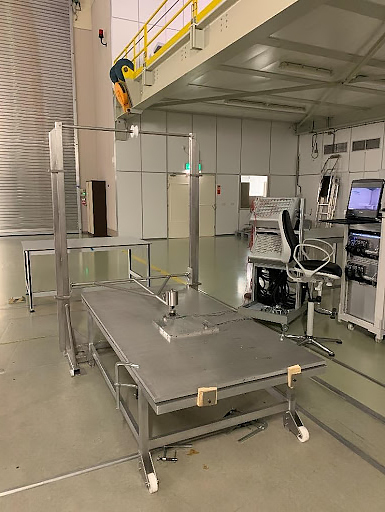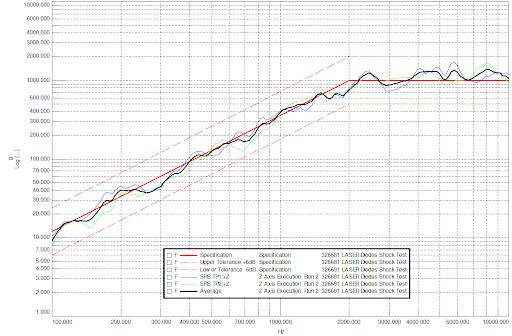Shock test bench
General Description
The ESTEC shock test facility is designed to simulate far-field shock environments experienced by spacecraft components due to pyrotechnical shocks generated by on-board devices or launcher separation events, such as first and second stages, fairing, spacecraft separation.
The working principle of the shock bench is a pendulum impact hammer exciting the eigenmodes of a so-called ringing plate, to which the test article is attached.
The hammer impact generates a spatially uncorrelated excitation of the test unit, replicating effects similar to the ones on the spacecraft. The ringing plate is a 1m x 2m aluminium plate supported on foam pads.
The pendulum hammer with adjustable mass is rigged such that it can strike the table vertically or sideways generating out-of-plane or in-plane excitation. Test articles are mounted via an interface plate or directly to the ringing plate.


Shock response spectrum
By ensuring the proper alignment of the various elements constituting the shock bench, the system achieves excellent repeatability, creating great confidence in the performance of the shock bench.
The resulting shock response spectrum (SRS) is driven by the flexion modes of the plate and can be tuned by adjusting:
- The position of the test article on the plate
- Boundary conditions of the ringing plate
- Hammer tip and anvil plate materials
- Pendulum drop height
- Hammer mass
Before each test, the shock bench is tuned to achieve the specified SRS using a test item dummy model.

